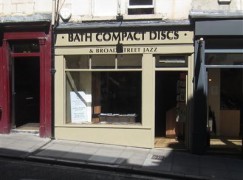Ruth Leon recommends… Fiddler in Yiddish
Ruth Leon recommends|
Fiddler in Yiddish Click here to watch This revival is performed in Yiddish, a language spoken today by a small contingent of Orthodox Jews but once the lingua franca of most of the Jewish world, mainly in the Pale of Settlement. The Pale was a vast area of the Tsarist Russian empire which included Belarus, Lithuania and Moldova, much of Ukraine, Latvia and Poland. Jews were only allowed to live within the Pale and forbidden to reside, even temporarily, beyond it. The story of Fiddler, like the story of the Jews, is circular, and by the end of the show, Tevye the Milkman hitches his lame horse to his cart and lugs his family’s belongings around the stage, on his way out of the district. They trudge in a circle, mirroring the movements of the show’s jubilant beginning but upended by the constants of Jewish life – disruption and reinvention. A Tsarist edict has expelled the whole community from Anatevka, their village, their shtetl, the only place they know. This soaring production, brimming with life and fresh as on the first opening night, wrestles with two duelling traditions: the broad appeal of the original show and the specificity of an ethno-language that was once universal among Eastern European Jews, but is now spoken by fewer than a million people. The show’s signature song, ’Tradition’, spells out the key to Jewish life and survival. When ‘Tradition’ becomes ‘Traditsye,’ in this production, we can see it demonstrated in even subtler ways. Here is ‘Tradition’ or ‘Traditsye’ from rehearsal footage for the current off-Broadway revival. Steven Skybell as Tevye. This is to me somehow even more poignant when performed, as here, in the cast’s contemporary street clothes, particularly when, just looking at them, it is clear that many of the cast are not Jewish but have learned Yiddish especially to appear in this production. Directed by Oscar and Tony winner Joel Grey Fiddler on the Roof in Yiddish, stars Steven Skybell, who recreates his award-winning performance as Tevye, a milkman navigating family, faith, and changing traditions in the little Russian shtetl of Anatevka. If you’re in New York or planning on a trip there, this is an unmissable theatrical event but hurry, it’s running only until Jan 1. The show has English and Russian subtitles projected throughout. If you want to know what they’re singing about, here are the lyrics in English, the language in which they were written by Sheldon Harnick. “Tradition” (Chorus) (Tevye) (Tevye & Papas) (All) (Golde & Mamas) (All) (Sons) (All) (Daughters) (All) (Tevye) (All) (Tevye) |






Comments